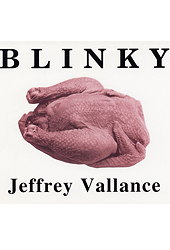Patents
Trick Bass Viol
I would have enjoyed seeing the dogs emerge from the viol itself, but--as I interpret the patent--they are in the box at the base of the instrument. Still, a musical instrument filled with beer is also acceptable.Original patent here.
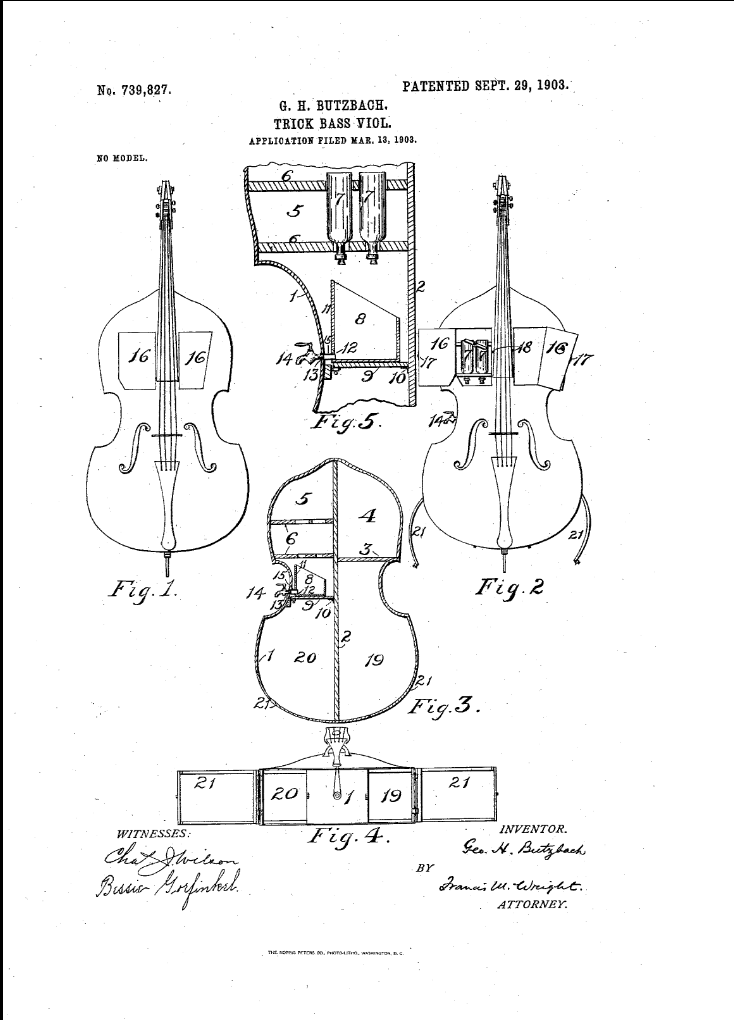
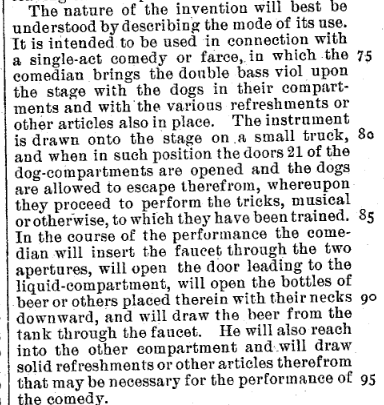
Posted By: Paul - Mon Feb 06, 2023 -
Comments (1)
Category: Magic and Illusions and Sleight of Hand, Music, Patents, Dogs, 1900s, Alcohol
Shoes with Hinged Soles
There must be a good reason why, for millennia now, all shoes have come with unibody-construction soles. But Robert M. Lyden thought differently.Full patent here.
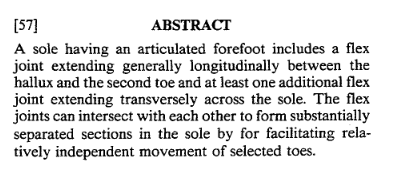
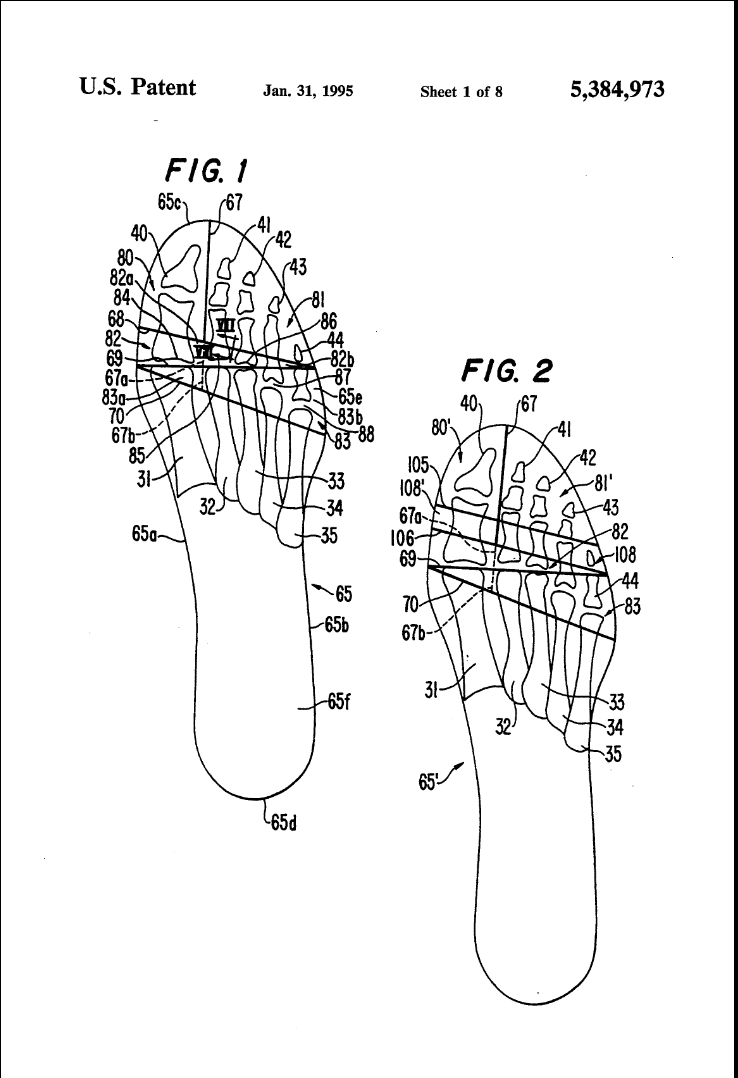
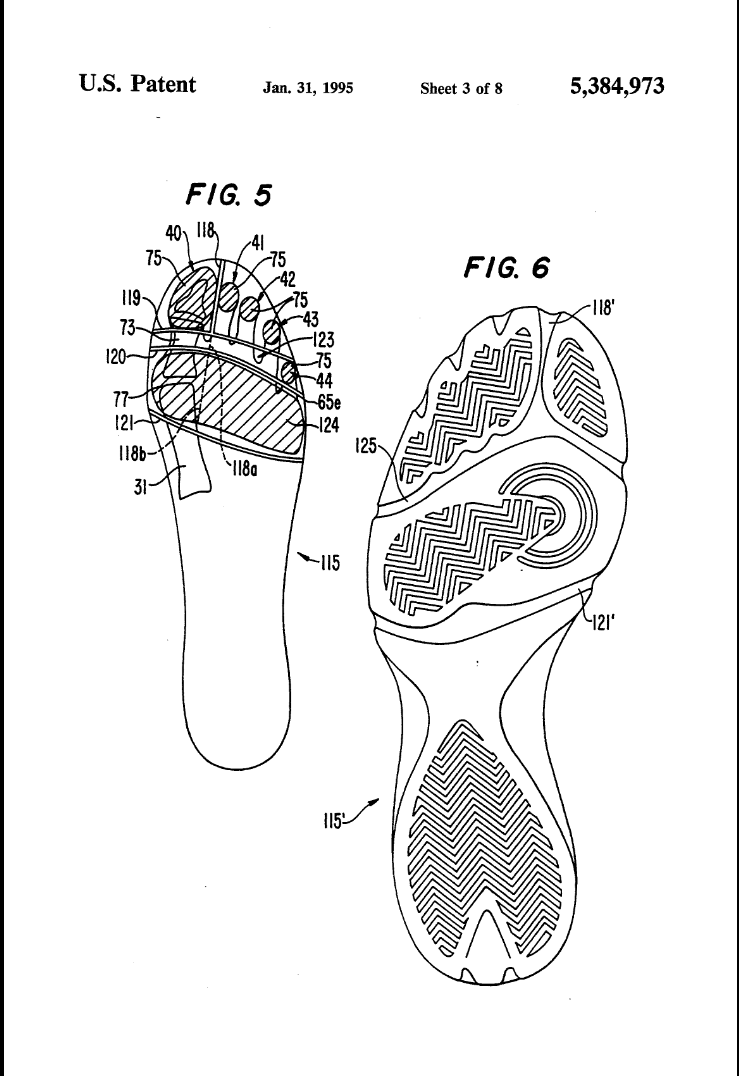
Posted By: Paul - Tue Jan 17, 2023 -
Comments (4)
Category: Body, Inventions, Patents, Shoes, 1990s
Mammiform and Protector
In 1864, Eleanor Marshall was granted Patent No. 43,321 for her "mammiform breast-protectors." From her patent:My improved mammiform and protector is formed of wire wound upon these formers, forming two springs, AA, connected together as shown, and being as similar as possible to the natural breasts. These springs AA may be separated and used singly when desired...
My improved mammiform and protector, being thus constructed, will be found to possess the following advantages: light, flexible, and covering the natural breasts without depressing them, and serving to protect them, and yet the springs of my mammiform and protector may be pressed together or onto the natural breasts, or in any other direction, and when relieved from such pressure resume their natural position and save the wearer the relaxing and debilitating effects of pads, answering all the purposes of a protector, and always presenting a natural appearance.
With springs like that, if a woman accidentally fell forward she'd bounce right back up.

Posted By: Alex - Thu Dec 29, 2022 -
Comments (4)
Category: Patents, Underwear, Nineteenth Century
Santa Claus Foot
Ian Allison of Santa Rosa received a design patent in 2002 for his "Santa Claus Foot." I assume the foot is supposed to be hung inside a fireplace — the patent description doesn't specify. Though having Santa's severed leg hung beside the tree might add some Christmas cheer.
Posted By: Alex - Wed Dec 14, 2022 -
Comments (2)
Category: Patents, Christmas
Hair Coloring Calculator
Pity the poor inventor of the 1980s, who had a notion for something not supported by the clunky digital tech of that era. This elaborate device is today just a free app.Full patent here.
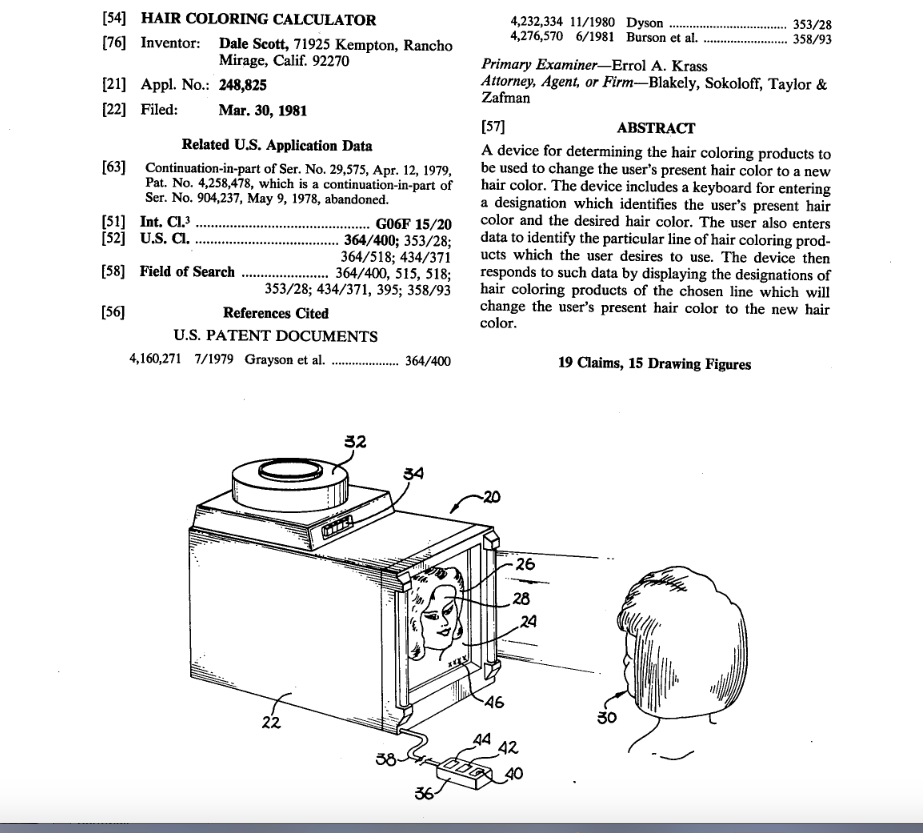
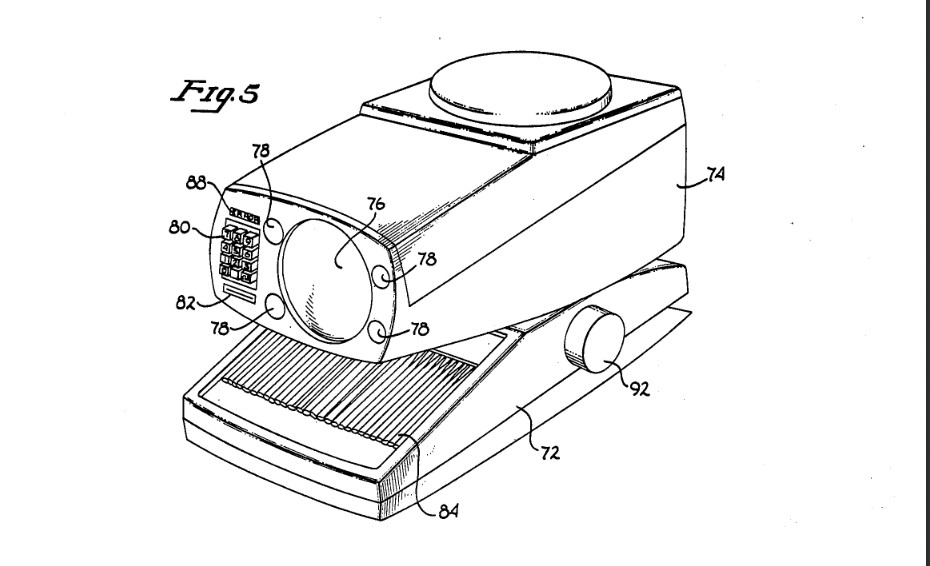
Posted By: Paul - Fri Nov 25, 2022 -
Comments (0)
Category: Inventions, Patents, 1980s, Hair and Hairstyling
Thanksgiving Hair Tonic Cocktail
In 1909, Friedrich Wilhelm Emil Müller of Chicago received a patent for a hair tonic that, so he claimed, would cause hair "to grow on bald spots of the head." All you had to do was thoroughly rub it into the scalp with the tips of the fingers several times a day.The tonic struck some at the patent office as sounding quite tasty. So it was served as an aperitif at the 1936 Thanksgiving-week banquet in Washington DC celebrating 100 years of the American patent system.


Tacoma News Tribune - Nov 24, 1936
Posted By: Alex - Thu Nov 24, 2022 -
Comments (2)
Category: Inebriation and Intoxicants, Patents, Thanksgiving, Hair and Hairstyling, Alcohol
Breakaway Stethoscope
Joshua Allen Stivers of Puyallup, WA recently received a patent for a "breakaway stethoscope." It works like a normal stethoscope, but breaks apart if someone tries to use it as a garrote to strangle a person:
A quick google search reveals that stethoscopes become weapons disturbingly often. So it's kind of surprising that breakaway ones aren't already standard issue.

Derby Evening Telegraph - Aug 9, 1948
via Jeff Steck
Posted By: Alex - Thu Nov 17, 2022 -
Comments (3)
Category: Crime, Medicine, Patents, Weapons
Circular Boxing Rings
In 1975, Marvin Jenson received a patent (No. 3,876,197) for a circular boxing ring. As he noted in his patent, a circular ring is safer than a square one due to the lack of corners:In a newspaper interview, Jenson further explained that the idea for the round boxing ring had occurred to him after watching the 1961 fight between Benny Paret and Emile Griffith, during which Paret got trapped in a corner and took such a beating that he fell into a coma and died.
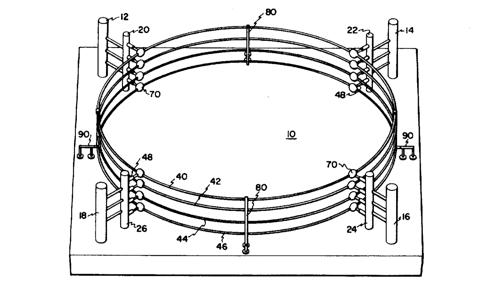
Jenson's patent drawing

Jenson's circular ring in use
Jordan Valley Sentinel - June 10, 1976
Jenson was hardly the first person to come up with the idea of a circular boxing ring. The idea has been around for a long time. In fact, way back when fighters used to compete in circles drawn on the ground, which is why boxing rings came to be referred to as 'rings' in the first place, rather than 'squares'.
So how did boxing rings end up being square and continue to be so?
As far as I can tell, it's mostly a matter of convenience. It's easier to string rope in a straight line rather than a circle.

An earlier attempt at a circular ring
Newsweek - May 8, 1944
Posted By: Alex - Thu Oct 27, 2022 -
Comments (2)
Category: Sports, Martial Arts, Patents
Goat-mobile
Not only bucks, but bleats! The inventor's predilection for a goat figure definitely NOT Satanic!Full patent here.
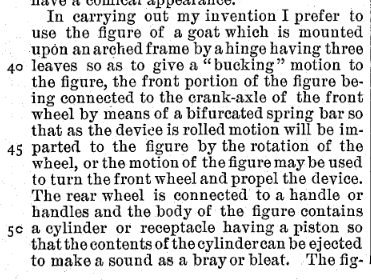
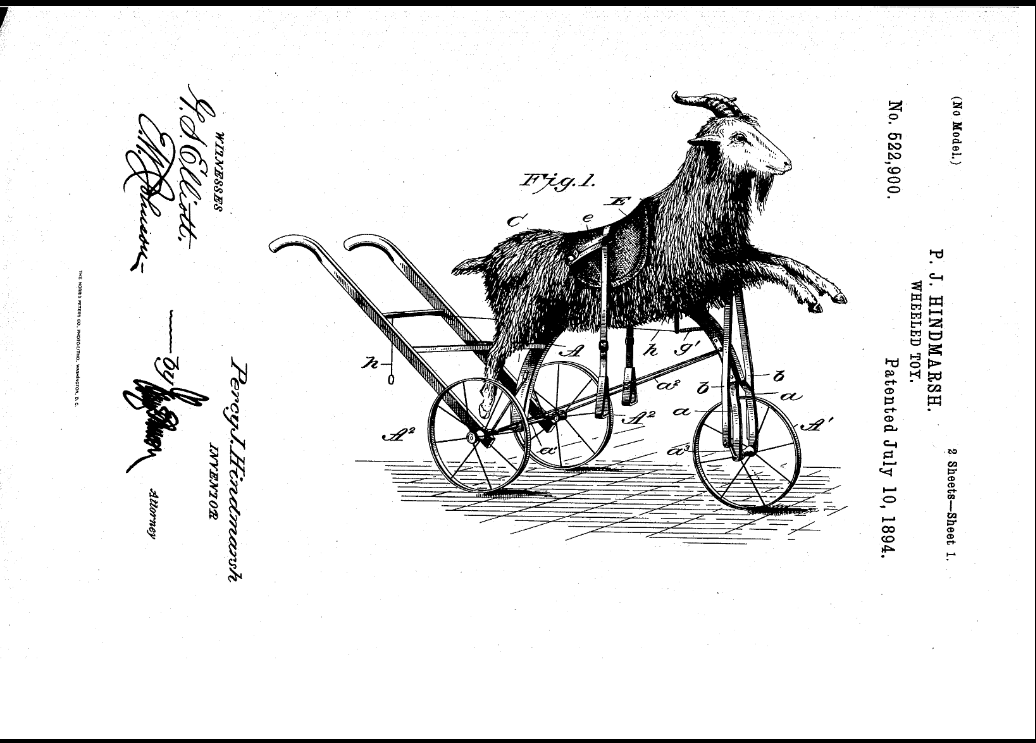
Posted By: Paul - Sat Oct 22, 2022 -
Comments (3)
Category: Animals, Bicycles and Other Human-powered Vehicles, Inventions, Patents, Toys, Nineteenth Century
Louis Duprey’s Trapdoor Theater Seats
One of the minor annoyances of going to a theater is having your view blocked if someone in front of you gets up from their seat. Or having to stand from your seat to let someone get by.Back in 1924, Louis Duprey patented a solution to this problem. He envisioned a theater in which guests would enter through a subchamber, get into their seats, and then be raised upwards by a hydraulic lift, through a trapdoor, into the theater itself. Anyone who wanted to leave early could simply lower themself back down, disturbing no one else.
It's an over-engineered solution to a minor problem, but I would happily pay extra, at least once, to experience a theater like this. Though I'd probably spend the entire time going up and down in my chair.
More info: Patent No. 1,517,774
Related Posts: Thomas Curtis Gray's horizontal theater, Theater in a Whale, Lloyd Brown's Globe Theater


via New Scientist
Posted By: Alex - Thu Oct 20, 2022 -
Comments (6)
Category: Architecture, Entertainment, Theater and Stage, Patents, 1920s

| Who We Are |
|---|
| Alex Boese Alex is the creator and curator of the Museum of Hoaxes. He's also the author of various weird, non-fiction, science-themed books such as Elephants on Acid and Psychedelic Apes. Paul Di Filippo Paul has been paid to put weird ideas into fictional form for over thirty years, in his career as a noted science fiction writer. He has recently begun blogging on many curious topics with three fellow writers at The Inferior 4+1. Contact Us |


